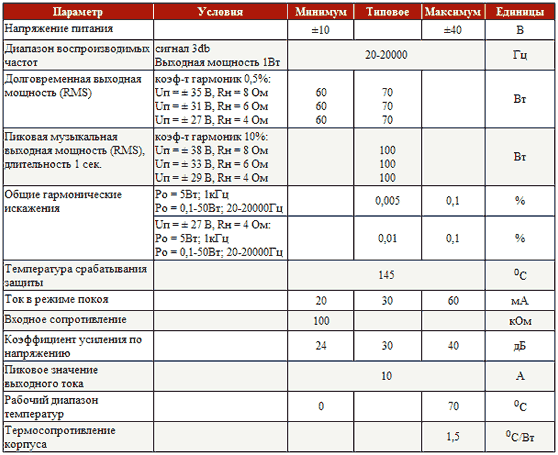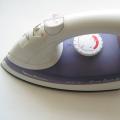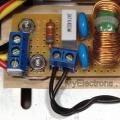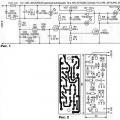TDA 2003 Chip Amplifier
Everyone is familiar with the mono amplifier circuit on the TDA 2003 microcircuit. It is used in various radio equipment: in TVs, speakers for a computer, car radios, etc. 3A. Output power (Uп = 14V): - RL = 4.0 Ohm - 6 W - RL = 3.2 Ohm - 7.5 W - RL = 2.0 Ohm - 10 W Analog - K174UN14.
Quite simple ULF on two microcircuits and two transistors
The amplifier develops an output power of up to 25 watts per channel. It can operate on a load of 3-10 ohms. In general, a good analog HI-FI amplifier THD is not more than 0.03%
Simple bass amplifier
Amplifier Specifications:
Nominal frequency range, Hz ............................... 63 ... 12500. Rated input voltage, V ................................... 0.25. Rated input power, W, at a load of 4 Ohm with a harmonic distortion of not more than 1% .............................. 2.
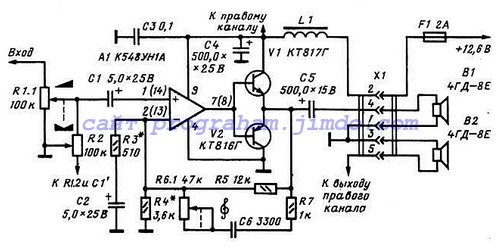
UMZCH on TDA2005
Simple UMZCH on a cheap TDA2005 microcircuit. Develops power up to 18W, works well from a car on-board network and from a laboratory source. It does not require adjustment - you just need to assemble it correctly, and do not forget about the radiator. The print is given "in the mirror" under the "laser iron". Capacitors for a voltage not lower than the supply voltage. Hope it comes in handy for someone.
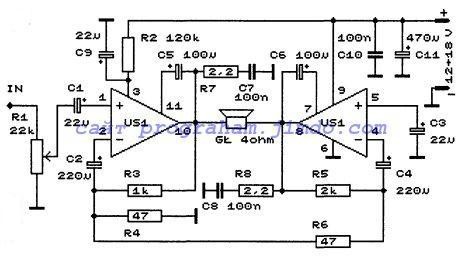
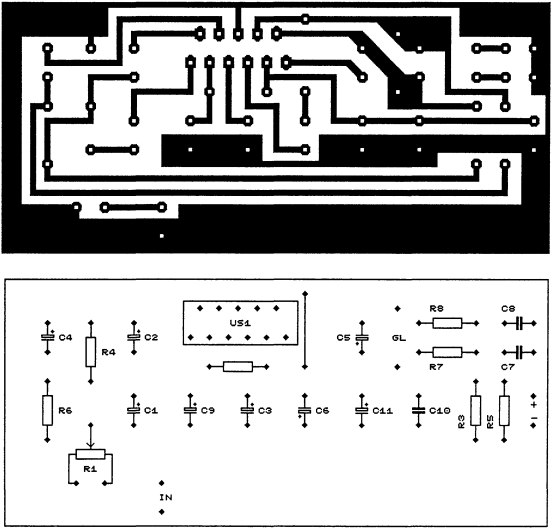
Powerful ULF for audio center
When making an audio center on your own or upgrading an existing one, developing an amplifier for home theater may need a compact and powerful UMZCH module. An amplifier based on the TDA 7294 microcircuit is very convenient in this sense, such advantages of the microcircuit as high output power, a wide range of supply voltage and
low harmonic distortion, combined with a very affordable price, make it attractive to use this
amplifier in many home-made designs of audio equipment, as well as in the repair and modernization of ULF industrial equipment.
Specifications:
1. Supply voltage from ± 7.5 to ± 48V.
2. Nominal supply voltage + 30V.
3. Maximum output power at a rated supply voltage at a load of 4 From, - 100W.
4. Input resistance 22 kOt.
5. Sensitivity 750 mV.
6. Harmonic distortion factor at 60W power, no more than 0.5%.
7. Load resistance from 4 to 8 From.
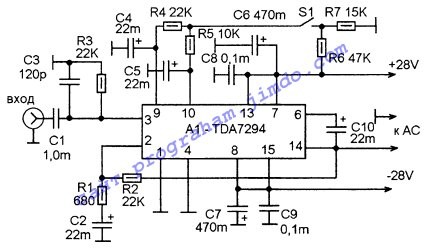
By selecting R1 or R2, you can correct the sensitivity of the power amplifier. The amplifier turns on in a "soft way"
by means of switch S1. Switch S1 is one for both channels, if there are two channels, there will simply not be a second channel in the circuit
resistors R7 and R6, and the junction point of R4 and R5 is connected to a similar point on the other channel.
Pins 5, 12 and 11 of the microcircuit are not used, so as not to complicate the layout of the board, they are not connected anywhere. There are not even holes for them. They need to be folded up or removed. The radiator is extremely necessary, since during operation the microcircuit heats up very quickly and noticeably.
It is impossible to turn on the amplifier without a radiator even for a short time. With a power of about 100W, the surface area of the radiator must be at least 500 cm2. You can also use a radiator with a smaller surface, but provide forced airflow with a fan, for example, from a power source
personal computer
It is not necessary to isolate the radiator from the microcircuit, but only
if it is not connected to the common power wire or other live parts other than the negative power rail. The fact is that the TDA7294 has a negative supply circuit with a radiator plate.
ULF on the TDA7294 chip
TDA7294- the brainchild of SGS-THOMSON Microelectronics, this microcircuit is an AB class low frequency amplifier, and is built on field-effect transistors. To disable, in other words, to burn it, it is almost impossible, it implements protection against short-circuit and overheating.
Of the advantages of TDA7294, the following can be noted:
output power 70 W for a load with a resistance of 4 Ohm, with a distortion of 0.3-0.8%;
functions of muting (Mute) and standby mode (Stand-By);
low noise level, low distortion, frequency range 20-20000Hz, wide operating voltage range - ± 10 - ± 40V.
